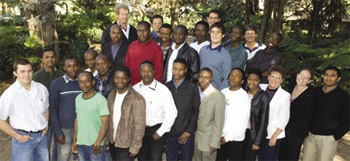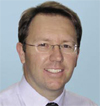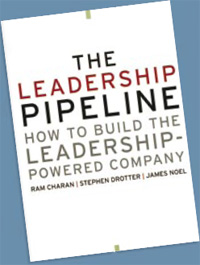|
SEPTEMBER 2006 |
 |
|
 |
| Home | | |
Message from CE | | |
Cover story | | |
Safety | | |
Construction | | |
New appointments | | |
| |
Australia | | |
Social investment |
| Currently viewing: Cover story / Next: Safety |
Cover story
SEIZE THE MOMENT
The 2010 Soccer World Cup has been officially handed over to South Africa and Murray & Roberts, as the country’s leading engineering and construction group, is gearing up its human capacity to meet the challenge

For South Africa, the 2010 Soccer World Cup coincides with a global trend of increased investment in infrastructure – a trend that will require what many analysts describe as the most dramatic increase in construction activity in our country’s history. After years of decline, this is raising the profile of the engineering and construction industry at a time when it seems least prepared.
A recent Whitehead Mann Thought Leadership global initiative poses the question: How does leadership change and evolve without compromising standards? Does the industry have sufficient ‘next generation’ leaders to sustain future growth? The report casts doubt on whether it does.
In the foreword to the Whitehead Mann report, Mike Welton, chairman of Hanson plc, writes: “Construction remains a traditional industry and its senior management echelons are heavily populated by engineers with their own approach and style.”
Murray & Roberts can justifiably claim to have identified the challenge ahead of the industry and has arguably done more to prepare itself for a period of unprecedented growth.
“We appear to have greater and more diverse capacity and capability compared to when we commenced our initial transformation process five years ago. We started our new journey Globalising Murray & Roberts with an executive and non-executive leadership team where about 75% of the members were new to Murray & Roberts, the majority of whom had limited previous exposure to engineering and construction,” says group CE Brian Bruce.
Yet, with turnover projected to double within the next five or six years, does Murray & Roberts have the depth of human capacity in its corporate office and operations to sustain such growth?
Brian argues that the greatest challenge to human capital development lies not so much in basic skills, as in strategic and performance leadership. This appears to be a global problem. The United Kingdom, preparing for the 2012 London Olympics, faces the identical challenge of leadership and capacity.
It is not the first time the South African construction industry has had to undergo a rapid transformation to meet significant growth expectations. A similar crisis loomed in the 1960s and 1970s when the country experienced the last cyclical construction boom. At that time, a new generation of leaders seized the opportunity and was rewarded with rapid personal growth and promotion. Yet, there was also a high attrition rate among those who failed to meet the challenge. Will the same occur this time?
Murray & Roberts can justifiably claim to have identified the challenge ahead of the industry and has arguably done more to prepare itself for a period of unprecedented growth.
In recent years, human capital development has tended to be a process-driven activity rather than the intuitive approach to talent identification and development employed in earlier decades.
Murray & Roberts has implemented a strategy to change this approach and uncover fresh solutions. But it recognises that so many of the challenges facing it are industry-wide that it cannot act in isolation. In particular, there is an industry-wide skills shortage, limiting the scope for external recruitment.
“The construction industry is at the forefront in this debate because our skills gap is more severe than other industries and our profit margin tighter. There is no margin for error in a contract,” Brian says. “These issues must be addressed by the industry as a whole, and much more has to be done collectively to address skills imbalances if the country is to achieve its full potential in the coming years – and host a successful World Cup.”
Murray & Roberts has strengthened its human capital capability and implemented a number of initiatives to support current leadership, develop a new generation of leaders and accelerate skills development.
An active recruitment programme is underway to attract expatriate South African construction executives from the United Kingdom to build domestic implementation capacity. Employing expatriates themselves (as opposed to recovering South African expatriates) is a sensitive issue in a country beset with high unemployment, but Brian says the country has to recognise that never in its history has it been able to meet challenges of high growth from internal resources alone. “We should be recruiting across our borders, whether from Africa, Asia or Europe.”
In the longer term, however, sustainable growth depends on the organic development of skills and leadership within the industry.
As Murray & Roberts has geared up to take on the challenge of being global, a key strategic imperative has been to ensure that its human capital is positioned as a competitive advantage. A strategy that aligns the Group’s human resource programme with its business strategy was implemented in 2005 and is driven by human resources director, Craig Lawrence. The strategy addresses the issues of diversity, capacity, performance, reward and risk & relations, each of which is driven by an objective and supported by practical initiatives that allow for measurement and assessment. Due to the diverse nature of Murray & Roberts, individual business entities are encouraged to tailor their human resource plans to their specific needs, but they are also required to align their plans with the Group strategic framework.
As Murray & Roberts approaches 2010, the Group will require succession in its top leadership team as the older generation of leaders start preparing for retirement. And the operations will have to strengthen their leadership capacity as business opportunity increases. Acknowledging the additional pressure this will place on the Human Capital team, Brian has appointed corporate executive Andrew Skudder to spearhead a leadership development initiative which will be driven from the CE’s office.
One solution that Murray & Roberts is pioneering in South Africa is the recruitment of high calibre people from other industries who bring different experience and new approaches to the Group. This has its challenges. The Whitehead Mann research indicates that outsiders are typically set up to fail. Brian disagrees, attributing failure more to negligence than malice.
“Our industry is so chaotic that a person coming from a more ordered industry has a tough time getting a grip on the industry dynamics. The checks and balances typical of other industries are not in place,” says Brian. Failures on the part of these outsiders are no reflection of their capability, he says, but because their sensibilities are not yet honed to the construction jungle.
Murray & Roberts has modified this approach by bringing outsiders in to the more controlled corporate office environment and then introducing them to operational activities once they have developed an understanding of the business and its culture.
Another solution which is being actively applied is for the existing proven leadership to expand its scope of responsibility in different businesses within the Group or by means of mergers and acquisitions.
To grow the number of young BEE employees entering the company, Murray & Roberts awards the majority of tertiary education bursaries to empowerment candidates.
A range of skills development programmes is offered, from adult basic education through to leadership programmes.
“The transformation process Rebuilding Murray & Roberts has placed our people under pressure. But the process has also liberated the performance potential of our organisation and we have witnessed significant growth in our younger executives. Various development programmes have been established to convert capacity into capability and prepare young and middle executives for the high standards of global performance.”
With major projects coming on stream now, Murray & Roberts is recruiting on a massive scale and fast-tracking the development of its people at all levels. In the longer term, this will build a formidable human capital resource that will contribute to sustainable future growth.
BY EAMONN RYAN AND LESLEY LAMBERT
LEADERSHIP DEVELOPMENT Andrew Skudder has been appointed as a dedicated resource in the CE’s office to focus exclusively on empowerment and leadership development. An ex-management consultant who has worked for leading global firms, Andrew joined Murray & Roberts in 2004 and has found a niche for himself in the development and implementation of special strategic projects. The first of these was a growth strategy for the construction materials businesses and facilitation of the acquisition of Oconbrick Manufacturing. In 2005, Andrew was appointed project manager of Murray & Roberts’ Letsema Broad-Based BEE Initiative. Within two months, he had developed a workable process for the construction industry’s first truly broad-based black economic empowerment initiative. This new challenge will draw on Andrew’s training as an Industrial Psychologist and the experience he gained as a management consultant. To prepare himself for the task, he has benchmarked best practices in other external models of leadership development. “There is great opportunity now for a new generation of leaders to rise up in the corporate and operational layers of the Group. But the process needs to be managed carefully. With the opportunity and challenge that lies ahead, and given the Group’s requirement for its businesses to be market leaders, our operational leaders have to be best-in-class,” he says. Andrew will liaise closely with corporate and operational leadership and draw on the support and services of Human Capital resources across the Group. His challenge will be to establish a leadership capacity and succession for the many new market developments that will define Murray & Roberts’ future. The development of a performance culture throughout the group will also be high on his agenda. “We need more open, candid, non-threatening discussions as part of the performance review process, to empower people.” |
GRADUATE PIPELINE
Murray & Roberts is actively attracting and developing young talent to fulfil its human capital and transformation needs. The Group has established an integrated “graduate pipeline” to supplement the learnerships and traineeships offered by its various business entities. This pipeline is made up of a tertiary education Bursary Scheme, a Graduate Development Programme and a Campus Engagement Initiative.
A Graduate Development Steering Committee has been convened to oversee the “graduate pipeline”.
Bursary Scheme
The Bursary Scheme provides financial assistance to full-time students, enabling them to qualify for a degree or national diploma at a recognised South African University or University of Technology, and to contribute to the Group’s medium and long term needs for qualified staff. Once bursars have successfully completed their degrees they are eligible for deployment on the Group’s Graduate Development Programme.
The Bursary Scheme is aimed primarily at engineering and built environment fields of study which are fundamental to the Group’s operations. Typically these fields are industrial engineering, construction management, quantity surveying, civil engineering, mining engineering, metallurgical engineering, chemical engineering, mechanical engineering and electrical engineering.
The number of bursaries awarded annually depends on the Group’s needs. A special “top up” of 65 bursaries has recently been offered by the South African business entities to meet growing demand for capacity development.
Murray & Roberts currently has a total of 113 bursars, 67% of whom are black students and 26% female.
Graduate Development Programme
 |
| Members of the 2006 Graduate Development Programme |
A pilot Graduate Development Programme (GDP) was launched in 2005 with an intake of 12 graduates. The GDP is part of a strategic framework designed to address human capacity and transformation issues and aims to provide a steady pipeline of young, diverse and talented future leaders into the Group.
A unitary group programme, based on a partnership between corporate office and individual business entities, is considered more effective in attracting, developing and retaining high calibre candidates.
The programme provides exposure and development at both professional/technical and personal/leadership levels. Where appropriate, graduates are rotated to other business entities to obtain relevant and varied exposure.
To embed group values and core competencies, an induction session and a number of training sessions take place to introduce the graduates to the basics of project management, value engineering, presentation skills and mentoring. A graduation ceremony is held and this year, the ceremony will be part of a broader “young graduates conference”.
The number of graduates on the 2006 GDP now stands at 38 – a significant increase on the 2005 pilot programme, and it is expected that this number will at least double in 2007. The current graduates comprise a range of disciplines including mechanical, electrical, civil, industrial, chemical, process and mining engineering, as well as quantity surveying, construction management and media studies. Currently 76% of the graduates are black and 16% female.
Campus Engagement
A Campus Engagement Initiative has been implemented to enhance the relationships between the Group and relevant university faculties and their student bodies. The initiative is based on three pillars: participation in campus events, communication through websites and strategic relationship management.
Campuses which are seen to be providing the most value to the Group and with which the Group wants to be more deeply involved in the long term are allocated executives as champions who will nurture the relationships. It is hoped that in time Murray & Roberts will be seen as a preferred partner and employer of choice.
IDENTIFYING TALENT
Building world class leadership and individual and organisational capacity is crucial to the Globalising Murray & Roberts strategy.
The main initiative driving capacity- building is a talent management process underpinned by a process called e-Talent.
E-talent allows Murray & Roberts to identify individuals defined as “top talent” and manage their motivation, development and retention more effectively than ever before. For example, by using information captured on a database a talent review forum, comprising senior executives, can assess the level of job satisfaction of their top talent and introduce measures to remedy areas of dissatisfaction. The forum can also identify capacity gaps and the type of skills needed to fill them.
LEADERSHIP PIPELINE
Today’s businesses compete as much on the strength of their intellectual capital as on that of their financial capital. This intellectual capital resides in employees at all levels of the firm, but it takes strong leadership to fully develop and enable it. Many companies still rely on outmoded development methods and concepts to prepare their current and future leaders or they hire expensive stars who are frequently recruited away. In this book, three experts show companies how to build their own leaders by understanding the critical passages a leader must navigate, by providing the appropriate development for navigating those passages, and by building the right system for ensuring a full pipeline of leaders now and in the future. Together Ram Charan, Stephen Drotter, and James Noel have substantial firsthand experience in leadership succession and development around the world. They have coached some of the world’s top corporate leaders and have developed effective leadership succession and development programmes for leading companies of all sizes. Drawing on this background, they provide readers with a proven method for building a leadership pipeline by defining six critical leadership passages, assessing competence and performance at each passage, and planning leadership development in a way that addresses the unique challenge of each passage. The Leadership Pipeline’s practical advice has proven to be applicable to companies of all sizes, to be particularly helpful to women and minorities, and to be effective in cross-cultural settings. It gives managers and human resource professionals the framework, tools, and language they need to help leaders at every level reach their full potential. It also gives individuals a framework for managing their own development and planning their own careers. - The Leadership Pipeline by Ram Charan, Stephen Drotter and James Noel, is published by Jossey-Bass WIN E-mail the answer, your name and telephone number to: competitions@profpart.com with Robust Competition in the subject line. Alternatively fax your name and contact number to (011) 646-6040. ONE LUCKY READY CAN WIN A COPY OF THE LEADERSHIP PIPELINE BY ANSWERING THIS QUESTION: HOW MANY CRITICAL LEADERSHIP PASSAGES DO THE AUTHORS DEFINE IN THIS BOOK? |



